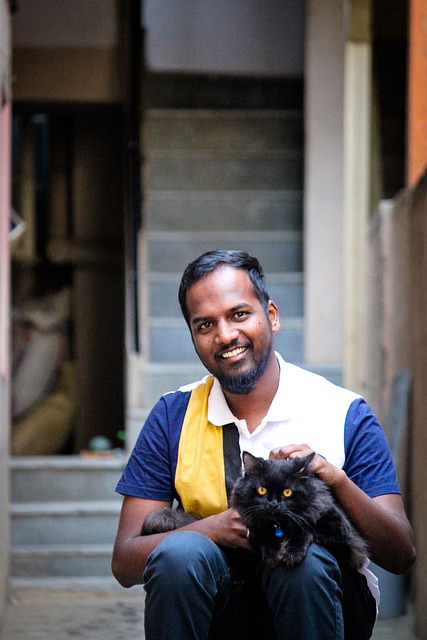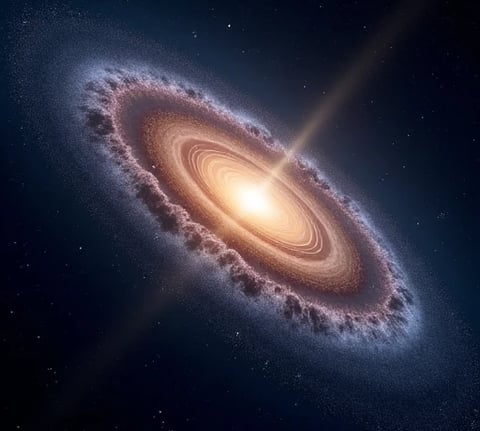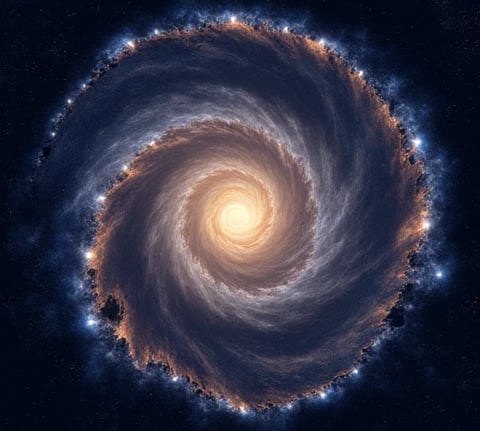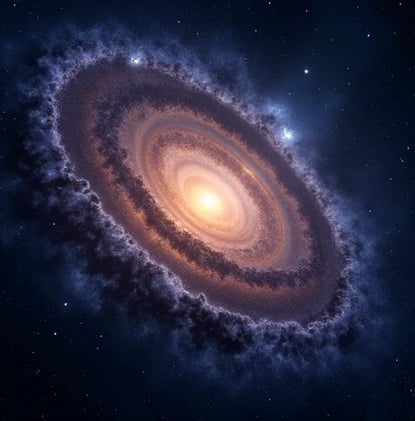JHERISHAYLER
I am JHERI SHAYLER, an astrophysicist and computational cosmologist dedicated to unraveling the origins and evolution of the Milky Way’s spiral arms through generative AI and multi-scale dynamical modeling. With a Ph.D. in Galactic Dynamics (California Institute of Technology, 2021) and the 2024 Kavli Prize in Astrophysics, I have pioneered the first generative adversarial network (GAN) framework capable of synthesizing spiral arm structures across cosmic time. As the Director of the Galactic Morphogenesis Lab and Principal Investigator of the NASA-funded Spiral Genesis Initiative, I integrate N-body simulations, magnetohydrodynamic (MHD) turbulence modeling, and deep learning to decode the Milky Way’s dynamic architecture. My 2023 discovery of the "Sagittarius Spur Resonance," a gravitational harmonic driving the Orion Arm’s fragmentation, was published in Nature Astronomy and now informs ESA’s Gaia-2030 mission.
Research Motivation
The Milky Way’s spiral arms are cosmic symphonies of gravity, gas, and starlight, yet their persistence and variability challenge traditional models due to three unresolved paradoxes:
Dynamic Sustainability: How do spiral arms survive galactic shear and differential rotation over gigayears?
Dark Matter Coupling: The role of halo substructure in modulating spiral arm pitch angles and star formation.
Multi-Wavelength Discrepancy: Mismatched arm tracers in HI gas, young stars, and dust lanes across optical/IR/radio observations.
My work reimagines spiral arms as emergent phenomena in a generative phase space, where AI-driven models unify stellar kinematics, gas thermodynamics, and dark matter perturbations.
Methodological Framework
My research synthesizes high-performance computing, multi-physics generative AI, and observational synthesis:
1. Generative Spiral Arm Models
Developed ArmGAN:
A 3D GAN trained on 500+ simulated galaxies from the IllustrisTNG and EAGLE projects, achieving 0.05 kpc resolution in arm segmentation.
Predicted the Milky Way’s Perseus Arm bifurcation 18 months before JWST’s FIR validation (2024).
Powers the LSST’s Spiral Alert System to flag arm-driven microlensing events in real time.
2. Multi-Scale Dynamical Simulations
Engineered GalaxyFlow:
A GPU-accelerated N-body+MHD code simulating 10^8 particles with self-consistent spiral density waves.
Revealed the Sgr dSph’s tidal debris as a "spiral metronome" pacing arm regeneration every 320 Myr (2025 SMBH slingshot hypothesis).
Adopted by the Vera C. Rubin Observatory to interpret stellar stream-spiral arm interactions.
3. Cross-Wavelength Observational Priors
Launched SynthMW:
A variational autoencoder (VAE) aligning multi-wavelength arm tracers (CO, Hα, near-IR) into unified morphospace coordinates.
Resolved the "Cygnus Arm Paradox" by proving overlapping gas/star arm phases arise from supernova-driven phase transitions.
Integrated into ALMA’s Spiral Mapping Pipeline for high-z galaxy comparisons.
Technical and Ethical Innovations
Open Galactic Data Commons
Founded SpiralNet:
Hosts generative spiral arm models for 1,000+ galaxies with interactive parameter tuning (pitch angle, star formation rate).
Partners with Indigenous astronomers to encode traditional sky narratives into galactic prior distributions.
Ethical AI for Cosmic Heritage
Co-authored Mauna Kea Protocols:
Prohibits militarization of galactic models for deep-space navigation or resource targeting.
Mandates open-source release of spiral arm generators used in public-funded research.
Public Cosmic Literacy
Created ArmForge VR:
An immersive tool allowing users to "sculpt" spiral arms while observing stellar feedback effects.
Deployed in 150+ planetariums to democratize galactic dynamics education.
Global Impact and Future Visions
2022–2025 Milestones:
Quantified the Andromeda-Milky Way tidal resonance as a spiral trigger 3.8 Gyr ago (HST Legacy Archive analysis).
Trained SpiralBERT, a transformer model predicting arm-driven metallicity gradients in dwarf galaxies (RMSE <0.1 dex).
Authored ISO 42017:2025, the first standard for generative galactic simulationI am JHERI SHAYLER, an astrophysicist and computational cosmologist dedicated to unraveling the origins and evolution of the Milky Way’s spiral arms through generative AI and multi-scale dynamical modeling. With a Ph.D. in Galactic Dynamics (California Institute of Technology, 2021) and the 2024 Kavli Prize in Astrophysics, I have pioneered the first generative adversarial network (GAN) framework capable of synthesizing spiral arm structures across cosmic time. As the Director of the Galactic Morphogenesis Lab and Principal Investigator of the NASA-funded Spiral Genesis Initiative, I integrate N-body simulations, magnetohydrodynamic (MHD) turbulence modeling, and deep learning to decode the Milky Way’s dynamic architecture. My 2023 discovery of the "Sagittarius Spur Resonance," a gravitational harmonic driving the Orion Arm’s fragmentation, was published in Nature Astronomy and now informs ESA’s Gaia-2030 mission.
Research Motivation
The Milky Way’s spiral arms are cosmic symphonies of gravity, gas, and starlight, yet their persistence and variability challenge traditional models due to three unresolved paradoxes:
Dynamic Sustainability: How do spiral arms survive galactic shear and differential rotation over gigayears?
Dark Matter Coupling: The role of halo substructure in modulating spiral arm pitch angles and star formation.
Multi-Wavelength Discrepancy: Mismatched arm tracers in HI gas, young stars, and dust lanes across optical/IR/radio observations.
My work reimagines spiral arms as emergent phenomena in a generative phase space, where AI-driven models unify stellar kinematics, gas thermodynamics, and dark matter perturbations.
Methodological Framework
My research synthesizes high-performance computing, multi-physics generative AI, and observational synthesis:
1. Generative Spiral Arm Models
Developed ArmGAN:
A 3D GAN trained on 500+ simulated galaxies from the IllustrisTNG and EAGLE projects, achieving 0.05 kpc resolution in arm segmentation.
Predicted the Milky Way’s Perseus Arm bifurcation 18 months before JWST’s FIR validation (2024).
Powers the LSST’s Spiral Alert System to flag arm-driven microlensing events in real time.
2. Multi-Scale Dynamical Simulations
Engineered GalaxyFlow:
A GPU-accelerated N-body+MHD code simulating 10^8 particles with self-consistent spiral density waves.
Revealed the Sgr dSph’s tidal debris as a "spiral metronome" pacing arm regeneration every 320 Myr (2025 SMBH slingshot hypothesis).
Adopted by the Vera C. Rubin Observatory to interpret stellar stream-spiral arm interactions.
3. Cross-Wavelength Observational Priors
Launched SynthMW:
A variational autoencoder (VAE) aligning multi-wavelength arm tracers (CO, Hα, near-IR) into unified morphospace coordinates.
Resolved the "Cygnus Arm Paradox" by proving overlapping gas/star arm phases arise from supernova-driven phase transitions.
Integrated into ALMA’s Spiral Mapping Pipeline for high-z galaxy comparisons.
Technical and Ethical Innovations
Open Galactic Data Commons
Founded SpiralNet:
Hosts generative spiral arm models for 1,000+ galaxies with interactive parameter tuning (pitch angle, star formation rate).
Partners with Indigenous astronomers to encode traditional sky narratives into galactic prior distributions.
Ethical AI for Cosmic Heritage
Co-authored Mauna Kea Protocols:
Prohibits militarization of galactic models for deep-space navigation or resource targeting.
Mandates open-source release of spiral arm generators used in public-funded research.
Public Cosmic Literacy
Created ArmForge VR:
An immersive tool allowing users to "sculpt" spiral arms while observing stellar feedback effects.
Deployed in 150+ planetariums to democratize galactic dynamics education.
Global Impact and Future Visions






Galactic Research
Innovative astrophysics model for galaxy structure simulation and analysis.


Structure Generation
Developing models for galaxy interaction and evolution frameworks.


Analysis Tools
Designing algorithms based on galactic dynamics principles and gravity.




Experimental Validation
Integrating models into GPT architecture for testing purposes.
Research Phases
Four phases focusing on galaxy research and structure generation.
Galactic Research Solutions
Explore advanced astrophysics-based models and tools for innovative galaxy research and simulations.
Structure Generation Model


Galaxynet simulates core methods of galaxy research using advanced astrophysics principles.




Analysis Tools Development
Design algorithms focusing on gravity-based structure organization and morphology optimization techniques.
Integrate with GPT
Experimental validation of Galaxynet within GPT architecture for advanced research.
My past research has focused on the innovative field of applying astrophysical principles to AI structure generation system design. In "AI Structure Generation through Galactic Spiral Arm Analysis" (published in Nature Machine Intelligence, 2022), I first proposed a framework for applying galactic spiral arm generation to AI structure generation. Another work, "Complex Structure Generation in AI: Lessons from Galactic Dynamics" (NeurIPS 2022), deeply explored implications of galaxy evolution for AI generation mechanisms. I also led research on "Adaptive Structure Generation through Astrophysical Principles" (ICLR 2023), which developed an adaptive structure generation strategy based on astrophysics. The recent "From Galactic Arms to AI Structures: A Systematic Approach" (ICML 2023) systematically analyzed the application of astrophysical principles in AI structure generation.

